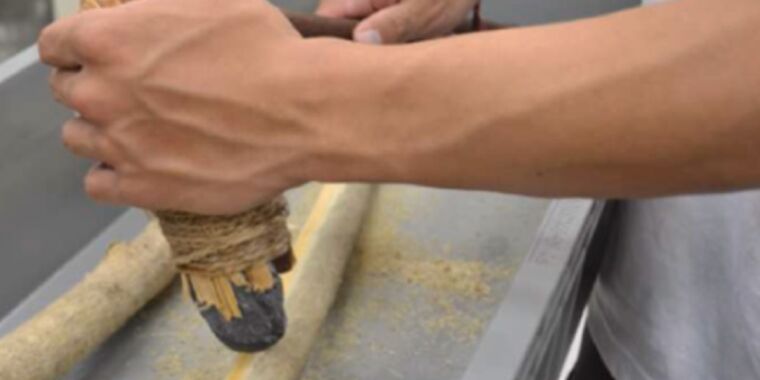Replicating Stone Age Tools Yields Insights Into Prehistoric Woodworking
Japanese scientists at Tokyo Metropolitan University embarked on a fascinating study to gain insight into how ground stone tools from the Early Upper Paleolithic era might have been utilized. By fabricating replicas of adzes, axes, and chisels and employing these tools in various tasks typical of that time period, they were able to analyze resulting fractures and wear patterns to establish novel criteria for determining the probable functions of ancient tools. The findings of their research, detailed in a recent paper published in the Journal of Archaeological Science, suggest that humans may have engaged in woodworking techniques much earlier than previously assumed.
Evolution of Woodworking Techniques
The evolution of tools and techniques for woodworking underwent a transformation from rudimentary implements like spears and throwing sticks in the early Stone Age to more sophisticated artifacts characteristic of the Mesolithic and Neolithic periods. Polished stone tools were utilized to craft canoes, bows, wells, and housing structures. While researchers traditionally attribute the advent of these stone tools to approximately 10,000 years ago, archeologists have unearthed stone artifacts featuring ground edges dating back as far as 60,000 to 30,000 years ago, raising questions about their specific applications.
Akira Iwase and collaborators at Tokyo Metropolitan University meticulously crafted replicas of adzes and axes using raw materials available between 38,000 and 30,000 years ago, such as semi-nephrite rocks, hornfels rocks, and tuff rocks. By fashioning the tools with a stone hammer and anvil and refining the edges with coarse-grained sandstone or medium-grained tuff, they recreated three distinct types of tools: adze-types, axe-types, and chisel-types. These tools mimicked the designs found on original Stone Age artifacts.
Experimental Testing of Replica Tools
The next phase involved subjecting the replica tools to ten different usage experiments to discern their functionality. The team tested axe-type tools by felling Japanese cedar and maple trees, crafting a dugout canoe, and fashioning wooden spears. Additionally, they employed adze-type and chisel-type tools to scrape bark off of fig and pine trees, as well as flesh and grease from deer and boar hides. Moreover, they used the tools to disarticulate deer hindlimbs to simulate ancient processing techniques.
- During the experiments, accidental fractures unrelated to tool-use functions were identified, such as those occurring during flint knapping or due to transportation methods.
- All tools underwent rigorous examination for both macroscopic and microscopic traces of fracture or wear to determine their specific usage patterns.
Insights From the Study
The results of the experiments highlighted nine distinct macroscopic fractures, with some exclusively observed during percussive actions like tree felling. Additionally, microscopic traces attributed to friction between the stone edges and wood surfaces were discernible. Notably, extensive use of adze-like tools for cutting antlers and bones led to significant damage, generating long bending fractures. Furthermore, tools employed for limb disarticulation exhibited large bending fractures and smaller flaking scars, while scraping tools displayed varying degrees of wear.
The authors concluded that relying solely on macroscopic fracture patterns or micropolish produced by abrasion might not be sufficient to determine precise tool usage. However, a combination of both provided more reliable indications regarding percussive usage, particularly in tree-felling scenarios compared to other applications like bone disarticulation. This comprehensive approach yielded invaluable insights into the prehistoric woodworking practices of early humans.
DOI: Journal of Archaeological Science, 2024. 10.1016/j.jas.2023.105891 (About DOIs).
Image/Photo credit: source url





